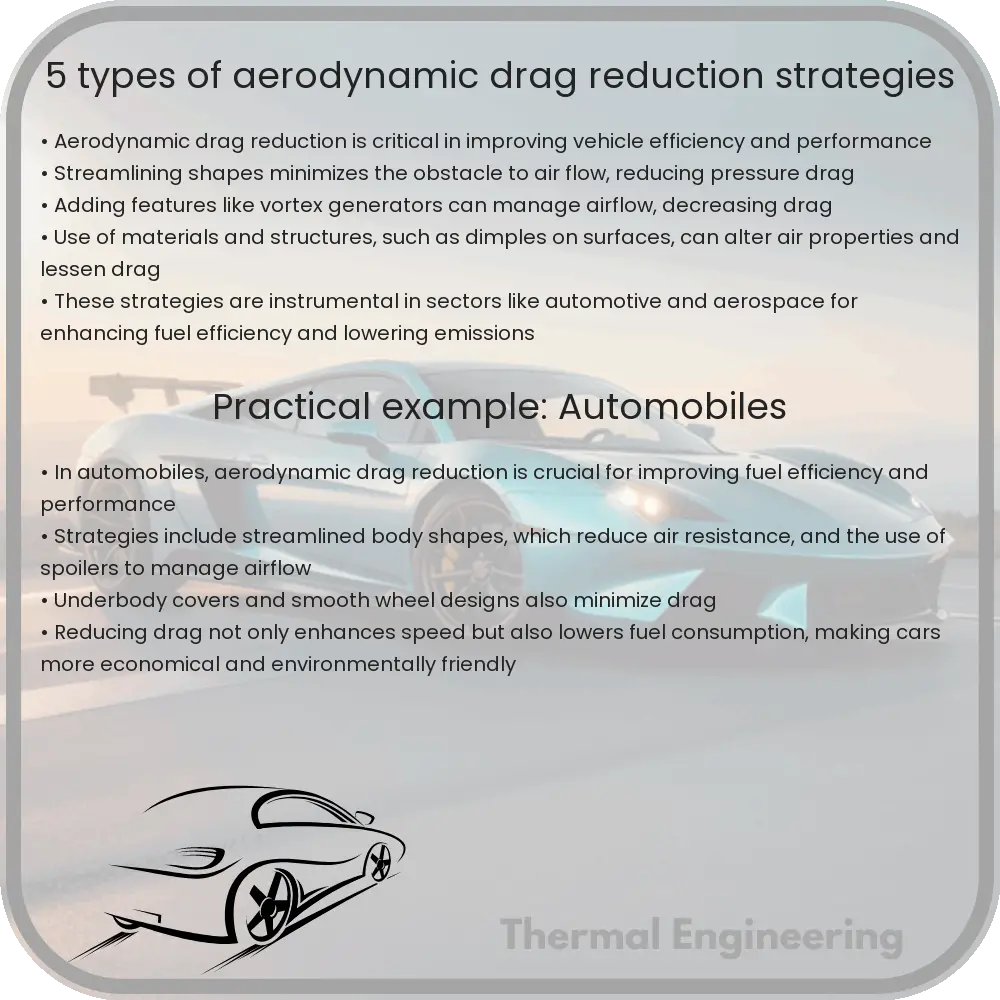Explore effective aerodynamic drag reduction strategies in engineering, enhancing vehicle performance and efficiency.

Understanding Aerodynamic Drag and Its Reduction Strategies
Aerodynamic drag is a force that opposes the motion of an object moving through air. It is an important factor in fields like automotive design, aerospace engineering, and even sports. Reducing drag can result in significant improvements in fuel efficiency, speed, and overall performance. Let’s explore five effective strategies used in engineering to reduce aerodynamic drag:
1. Streamlining
Streamlining involves shaping objects so that air flows more smoothly around them, which decreases the drag. This is commonly seen in the design of cars, airplanes, and even high-speed trains. Streamlined shapes are typically sleek and rounded, which allows air to pass over the surface with minimal resistance. For instance, the teardrop shape is a classic example of aerodynamic efficiency, often used as a model for high-performance vehicles.
2. Vortex Generators
Vortex generators are small, fin-like devices that can be attached to the surface of an object (like an aircraft wing or the roof of a car) to control air flow. They work by creating tiny vortices (spirals of air), which help maintain the flow of air close to the surface of the object. This process, known as “boundary layer control,” helps delay or prevent separation of the airflow from the object’s surface, thereby reducing the wake size and consequently, the drag.
3. Dimpled Surfaces
Inspired by golf ball technology, dimpled surfaces can also be used to reduce drag. The dimples work by promoting a turbulent boundary layer, which can stick to the object’s surface better than a laminar layer. This enhanced adherence reduces drag, especially at higher speeds. Dimpled surfaces are more commonly explored in sports equipment, but research continues into their potential applications in automotive and aerospace components.
4. Boundary Layer Suction
This technique involves suctioning off the slower-moving air near the surface (known as the boundary layer). By removing this layer, air resistance can be significantly reduced, lowering drag. Boundary layer suction typically requires a system of pores or slots on the surface through which the air is sucked away. While effective, the complexity and maintenance of such systems limit their popularity primarily to high-performance and experimental vehicles.
5. Tail Fairings and Boat Tails
Used extensively in the trucking industry, tail fairings, or boat tails, smooth the flow of air at the rear of vehicles. These devices extend the back of the vehicle and help in tapering the flow of air, minimizing the size of the wake. By effectively reducing the turbulence and vacuum that can occur at the back of large vehicles like trucks, these modifications enhance stability and reduce drag significantly.
Each of these strategies involves a fascinating application of physics to solve practical, real-world problems. By understanding and implementing such aerodynamic drag reduction techniques, engineers can dramatically improve the efficiency and performance of various vehicles and equipment, contributing to advancements in technology and environmental sustainability.